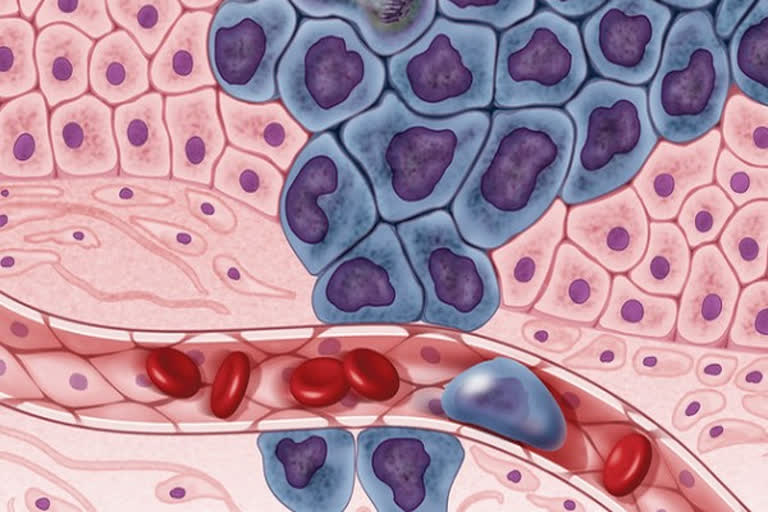Washington:Researchers have developed a technique that allows them to measure the generation rate and half-life of circulating tumour cells (CTCs) in mice. The findings of the study were published in the journal 'Nature Communications'.
As tumours grow within an organ, they also release cells that enter the bloodstream. These cells can travel to other organs, seeding new tumours called metastases. MIT engineers have now developed a technique that, for the first time, allows them to measure the generation rate of these circulating tumour cells (CTCs) in mice. Their approach, which also reveals how long CTCs survive once released into the bloodstream, could help scientists learn more about how different types of cancers spread through the body.
"By exchanging blood between mice while counting CTCs in real-time, we obtained a direct measurement of how quickly CTCs enter the circulation and how long it takes before they're cleared," said Scott Manalis, the David H. Koch Professor of Engineering in the departments of Biological Engineering and Mechanical Engineering, a member of the Koch Institute for Integrative Cancer Research, and the senior author of the study.
Also Read:Pfizer vaccine for kids may not be available until November
Using their new system, the researchers were able to study CTCs from pancreatic tumours as well as two types of lung tumours. Graduate student Alex Miller and Bashar Hamza PhD '20, a Koch Institute visiting scientist, are the lead authors of the paper, which appears today in Nature Communications.
Circulating tumour cells are rare in patients: One millilitre of blood might contain between one and 10 such cells. In recent years, researchers have devised strategies to capture these elusive cells, which can yield a great deal of information about a patient's tumour, and even help doctors track how a tumour is responding to treatment. "Circulating tumour cells are attractive because you can get them from blood and they provide a window into the tumour. It's a lot easier than biopsying the tumour," Manalis said.
In mice, CTCs are even more difficult to find because mice only have a little more than 1 millilitre of blood. Being able to study CTCs in mice could help researchers answer many outstanding questions about how rapidly these cells are shed by tumours, how long they survive in circulation, and how efficiently they seed new tumours, Manalis said. To try to answer some of those questions, Manalis and his students designed a system that lets them remove blood from a mouse with a tumour and flow it into a healthy mouse.
Through a separate tube, blood from the healthy mouse flows back to the tumour-bearing mouse. The system includes two cell counters (one for each mouse) that detect and remove circulating tumour cells from the blood. Using this setup, the researchers can analyse all of the blood from each mouse in less than an hour. After determining the concentration of CTCs in the bloodstream of the tumour-bearing mouse and of the healthy mouse, they can calculate the rate at which CTCs are generated in the tumour-bearing mouse. They can also calculate the half-life of the cells -- a measure of how long they survive in the bloodstream before being cleared by the body.
